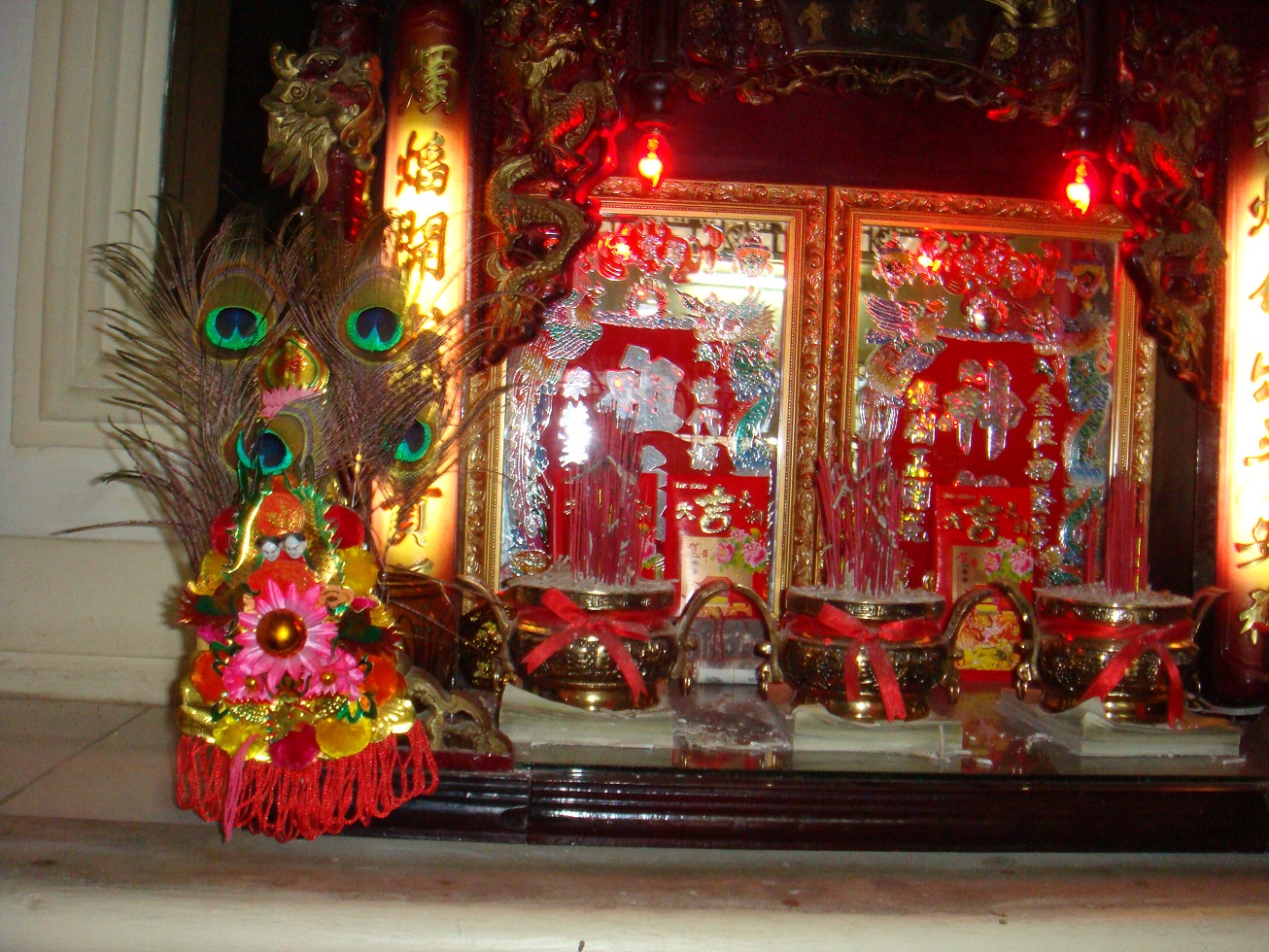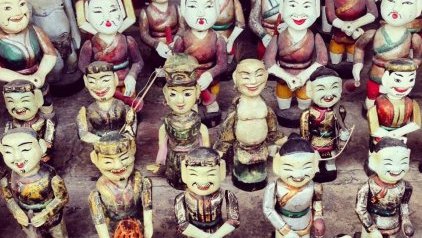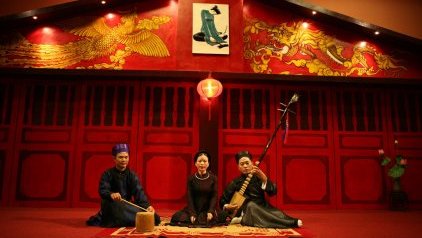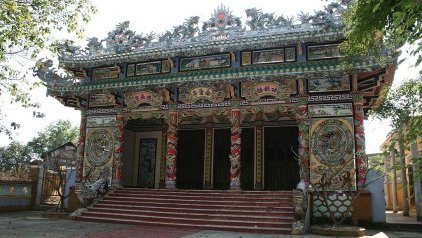Religious Life of Vietnamese
Vietnam is one of the least religious countries in the world. Although in theory, the country enjoys the freedom of religion, in practice there are a number of limitations on worship.
In Vietnam, people are free to choose their religion. Although most Vietnamese list themselves as having no religious affiliation, religion, as defined by shared beliefs and practices, remains an integral part of Vietnamese life, dictating the social behaviors and spiritual practices of Vietnamese individuals in Vietnam. In general, the religious belief of the common Vietnamese is a synthesis of the three traditional religions (Buddhism, Confucianism, and Taoism) which have been coexisting peacefully for centuries in Vietnam.

Praying in a pagoda
All the world's great religions can be found in Vietnam. At least four major beliefs have had a profound impact on the people and their culture and are reflected subtly or obviously in behavior and customs. These are Animism, Buddhism, Confucianism, and Taoism. Christianity entered Vietnam later and is now a religious force. Other beliefs such as Bahaism also have gained followings. Underlying all is a prevailing ancestor veneration. The result is a blend or synthesis of beliefs in which the forms and practices are peculiarly Vietnamese. Buddhism in Vietnam is unlike Buddhism in-for instance-Thailand.
As with other countries, the Vietnamese have several popular beliefs, such as animism and theism. The most widespread popular belief among the Vietnamese is the belief in ancestor-worship.
1. Buddhism in Vietnam
The number of Buddhists is the largest in Vietnam. Currently, the local concentration of Buddhists is Ho Chi Minh City.
There are two sects of Buddhism in Vietnam is Mahayana and Theravada. Mahayana Buddhism was introduced from China to the Red River Delta around the year 200 and Theravada Buddhism was introduced from India to the southern Mekong Delta from circa 300-600.
Experiencing a long history, Buddhism has been localized in Vietnam, creating its own identity. It is associated with many important events in the country. The flourished dynasties as Dinh, Le, Ly, Tran have associated with the spread of Buddhism, and meditation teachers have an important position in that reign.
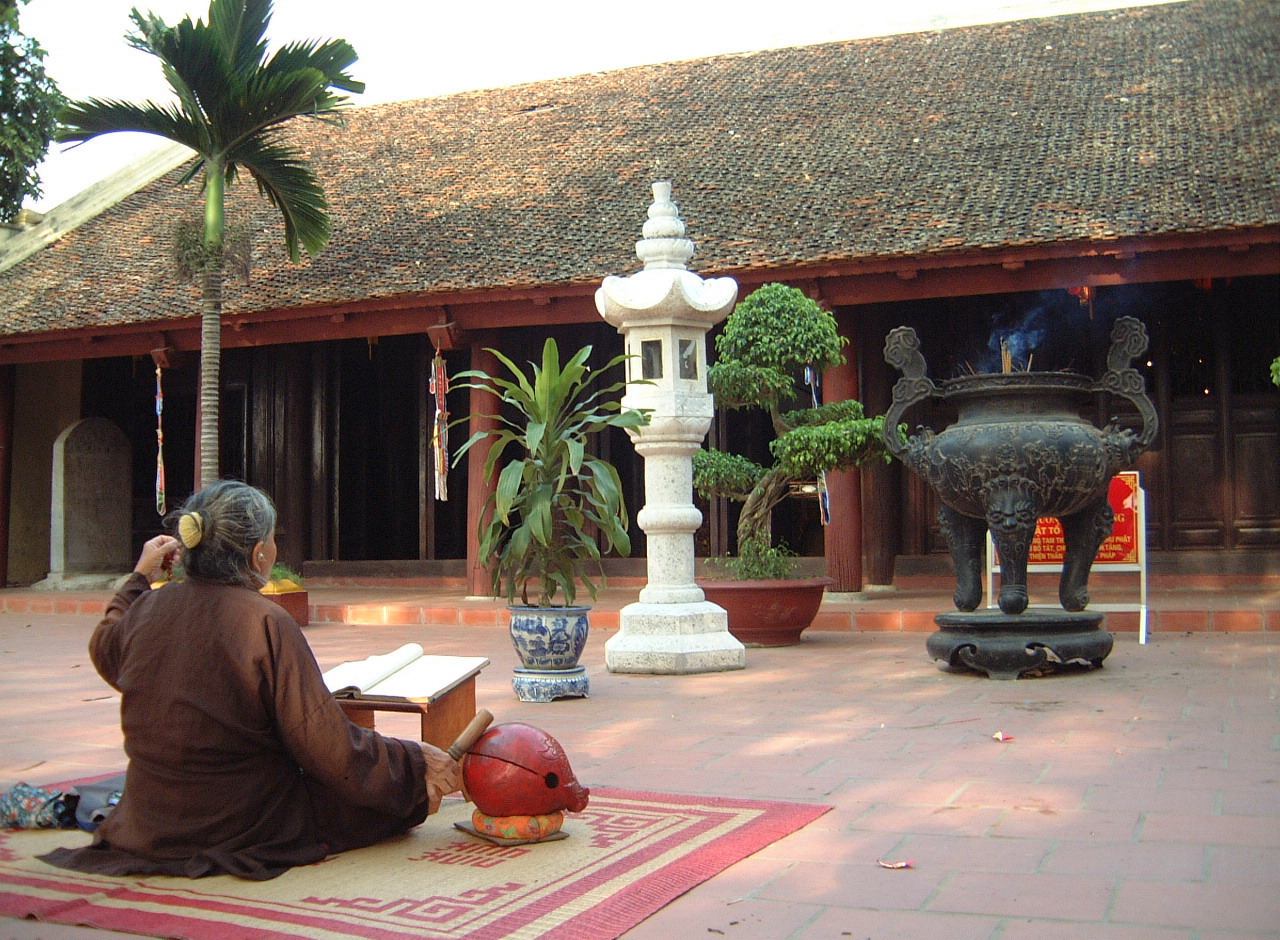
A pagoda for worshiping Buddha
The features of Buddhism in Vietnam
- Harmonizing:
Firstly, Buddhist beliefs reconcile with tradition: you can see the statues of gods in Vietnam were turned Buddhist, were sculpted by the standards of a Buddha statue. Initially, only Buddha was worshipped in the pagoda, but today, the pagoda is designed in a "pre-Buddha, post-God" or "pre-Buddha, post-Mother" form. The Vietnamese have taken gods, saints, Mother, the local loess, the national hero to worship in the pagoda.
Secondly, Buddhism compromise between sects: The pagoda in the north has Buddha, bodhisattvas, arhats of the various sects while in the south, next to Buddha Sakyamuni statue, there are others small one and there are external y gold coat and blue coat beside the brown coat.
Thirdly, Buddhism reconciles with Confucianism and Taoism: Buddhism, Taoism, and Confucianism, in turn, received in Vietnam, creating "Tam giao dong nguyen” (three religions have the same origin) and "Tam giao dong quy” (three religions have the same purpose). Three religions assist together in human life: the Confucian for social organization, Taoism for the human body, Buddhism for spiritual and afterlife. In addition, Cao Dai also spawned based on the fusion of Buddhism and other religions.
- Buddhism is influenced by matriarchal:
The Buddha in India appears to be the man, but Vietnam has both Buddha in man and Buddha in woman. Avalokitesvara Bodhisattva saves the people. In addition, Vietnam has our own Buddha-Mother form: Man Nuong Buddha (Phat Mau), Quan Am Thi Kinh (Quan Am Tong Tu) and Quan Am Dieu Thien (Buddha in Perfume Pagoda).
Some pagodas in Vietnam that you should visit as the One Pillar Pagoda, Tran Quoc Pagoda, Perfume Pagoda in Hanoi; Thien Mu Pagoda in Hue; Linh Phuoc Pagoda in Dalat; Giac Lam and Vinh Nghiem Pagoda in Ho Chi Minh City.
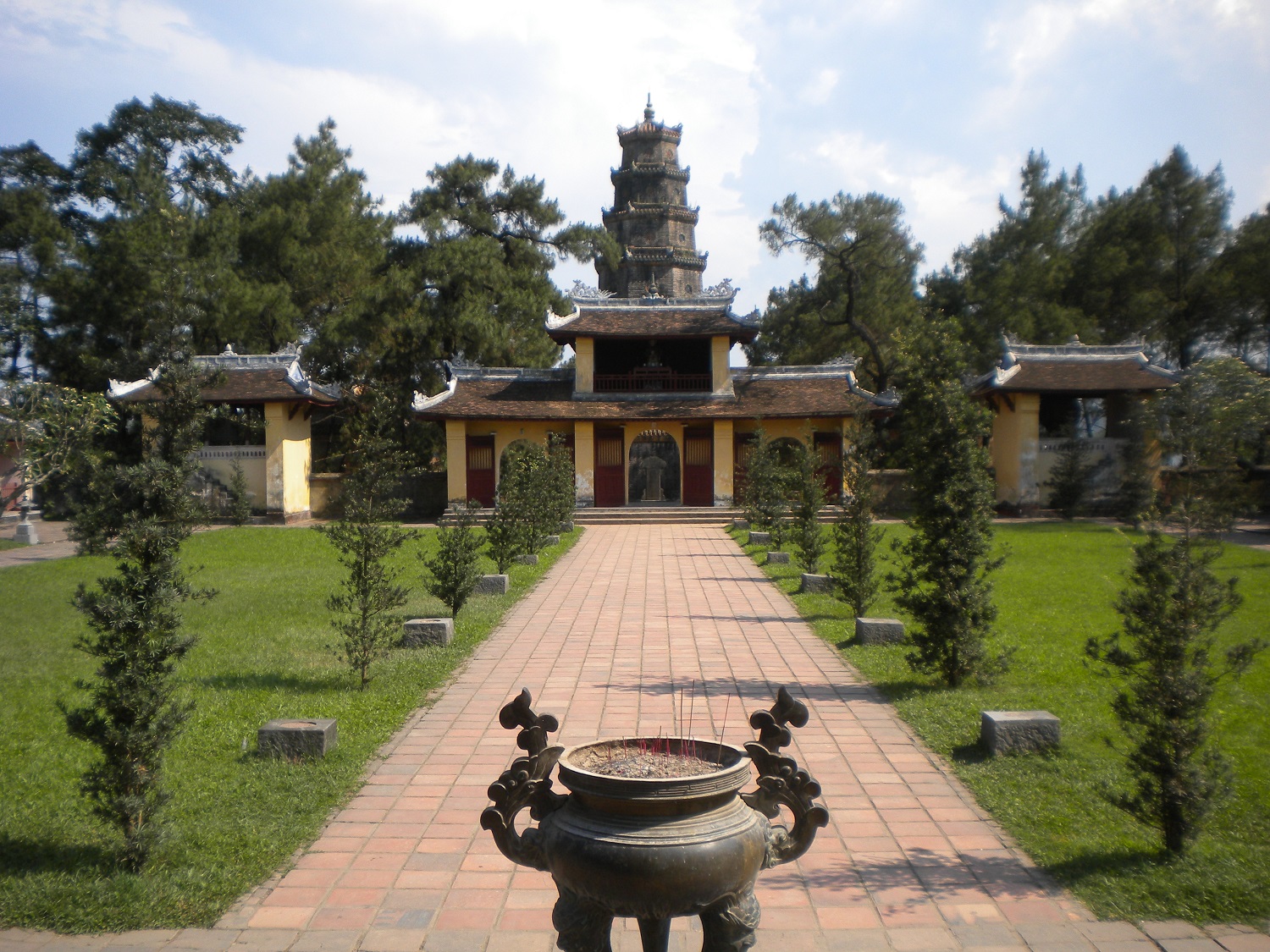
Thien Mu Pagoda in Hue
The notes when you visit temple and pagoda in Vietnam
- Dressed discreetly, do not wear shorts, skirts, tank tops, or cut-out dresses.
- Need to worship Buddhas and saints from the center first, then in the direction from right to left.
- When entering the main building of temples, do not get away from the central door, but must enter from the two side doors, and not step on the windowsill.
- Do not make a noise or speak disrespectful words arbitrarily of Buddha and saints, nor there is a lack of respect attitude as a hand pointing to the statue.
- When walking should not go in front of the people that bow down and spray.
2. Christian in Vietnam
The Spanish and Portuguese missionaries brought Christianity to Vietnam in the 16th century in Nam Dinh. Meanwhile, it became popular in the coastal provinces such as Nam Dinh, Thai Binh, Ninh Binh, Thanh Hoa, then spread to the region of the Red River Delta and the metropolitan area.
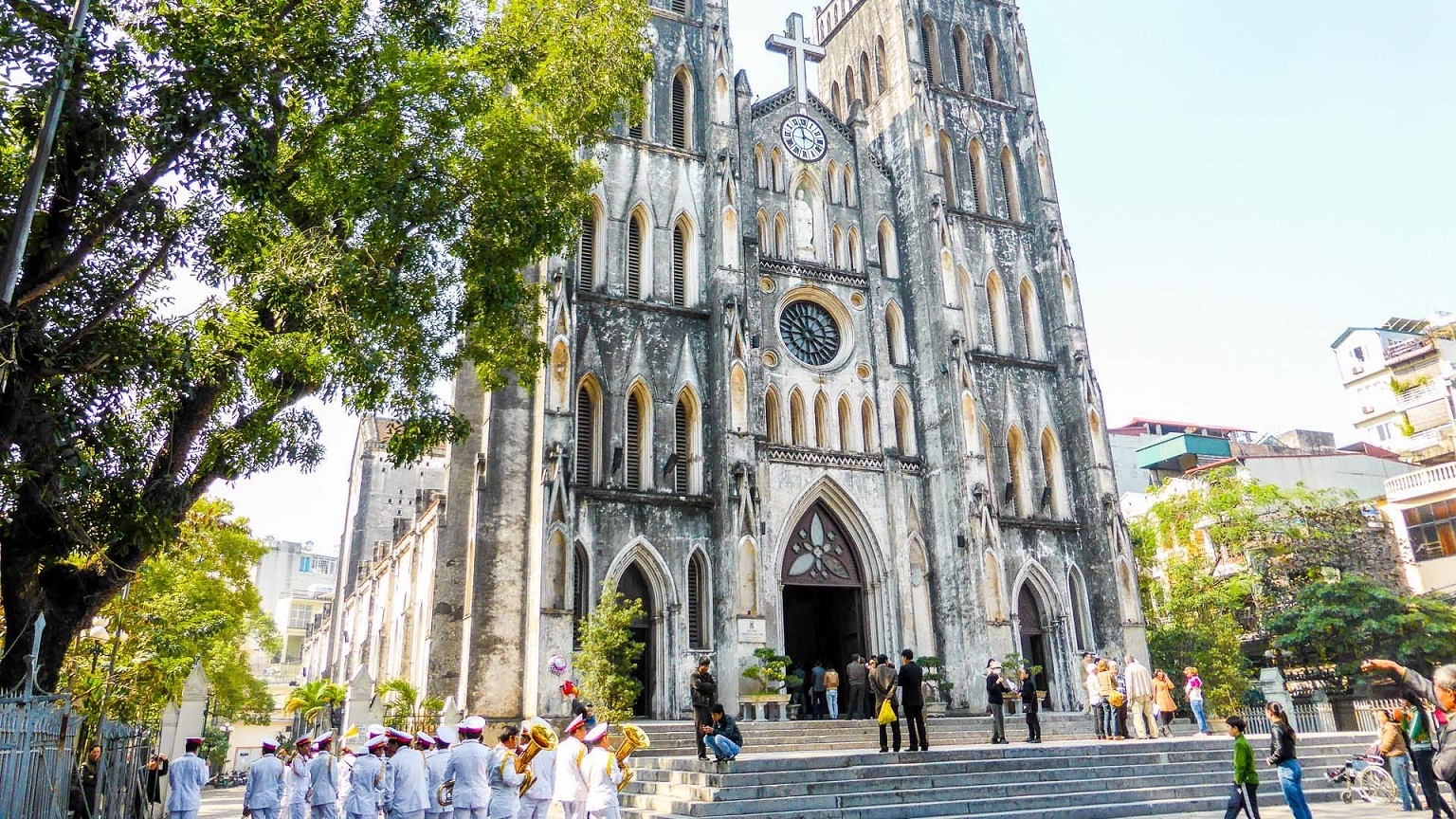
Hanoi Cathedral (locally called Big Church)
Christianity has many contributions to Vietnam
- Quoc Ngu alphabet:
The first difficulty for the clergy while going to Vietnam is the difference between language and writing. The pronunciation can be learned fast, but the written (based on Chinese characters) are too difficult. So they used the familiar Latin alphabet and adding the sign (available in several languages such as Portugal or Spain) to record Vietnamese. Gradually, the writing has been completed and become the official Vietnamese as today.
- The technique of printing and press:
To facilitate the mission, the foreign missionaries had introduced modern printing technology with the left letters in Vietnam. Then, the press formed and thrived in Vietnam with the perfection of printing technology and Quoc Ngu written. Using Catholic media contributes to developing the Vietnamese language. Moreover, the Catholic press archives the history of religious, political situation, economic and social Vietnam modern times.
- Science and Medicine:
Among the early missionaries in Vietnam, many people are trained in religious orders and Western institutes so they are adept scientists in many fields. They made the Western science approach to Vietnam. Some clergies had opened charity hospitals and medical with Western medical methods. It gradually became popular and therefore medical developed in Vietnam as a natural thing.
Some churches with unique architecture and meaning in Vietnam are St. Joseph’s Cathedral in Hanoi, Phat Diem Cathedral in Ninh Binh, Domaine De Marie Church in Dalat, Notre Dame Cathedral in Ho Chi Minh City.
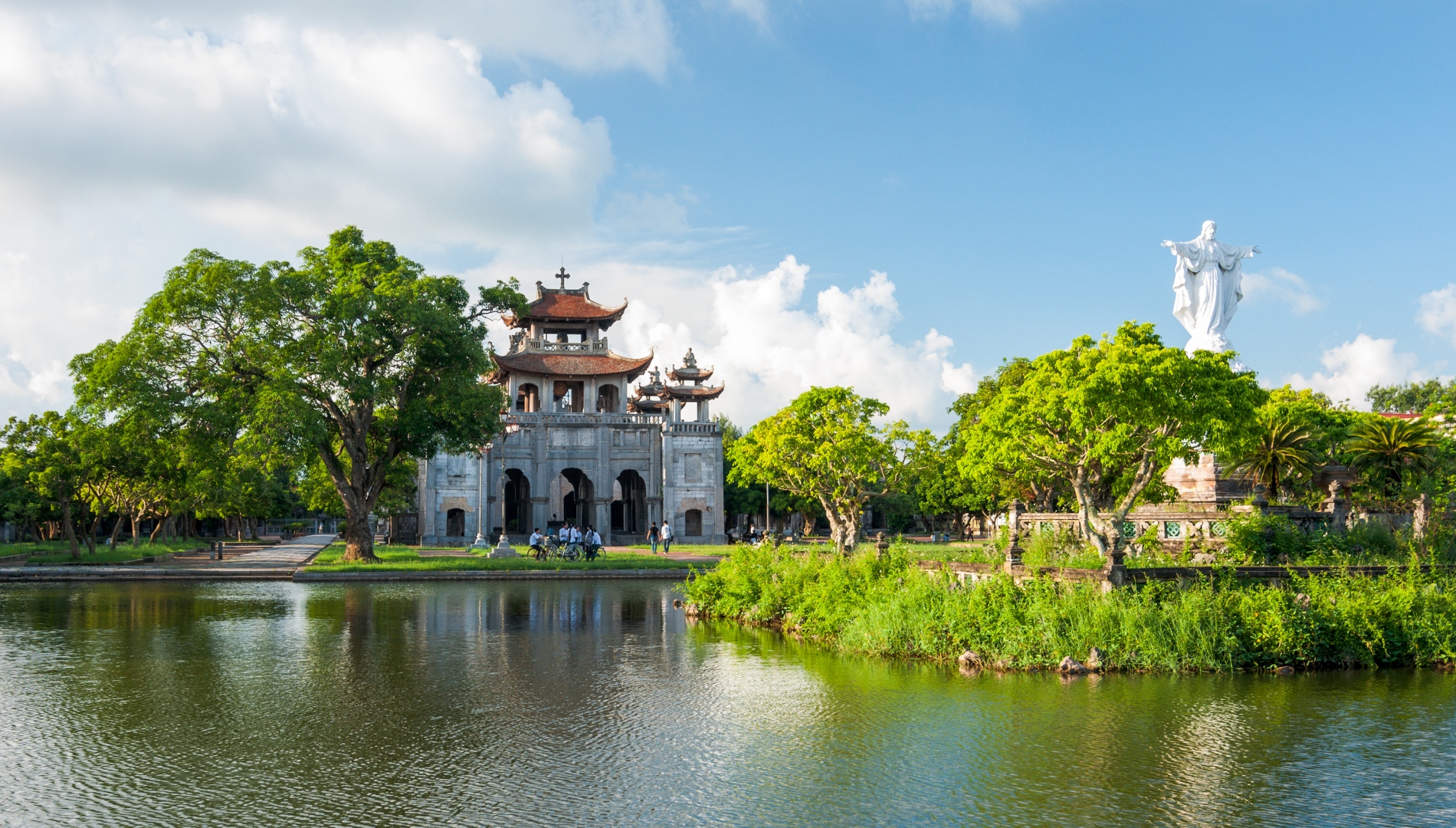
Phat Diem Cathedral in Ninh Binh
3. Cao Dai Religion in Vietnam
The Cao Dai religion was established in southern Vietnam in 1926 and is a monotheistic religion that credits God - rather than any prophet or Buddha - as its founder. There are a significant number of Cao Dai adherents in Vietnam, and their typical practices include prayer, veneration of ancestors, nonviolence, and vegetarianism. Practitioners of Cao Dai believe that we have now entered an era in which God and mankind will be united in ways not yet imagined and that all religions will one day be united for the salvation of all living things. Caodaism is also a syncretistic religion that combines elements from many of the world’s main religions, including Buddhism, Confucianism, Christianity, Hinduism, Islam, Judaism, Taoism, as well as Genie, the indigenous religion of Viet Nam. A visit to Cao Dai Temple - Holy See - in Tay Ninh Province is one of the popular tours on offer in Ho Chi Minh City. The promise of witnessing a religious ceremony of an intriguing religion unique to Vietnam is enough to pique your curiosity so add it to your half-day tour to Cu Chi Tunnels.
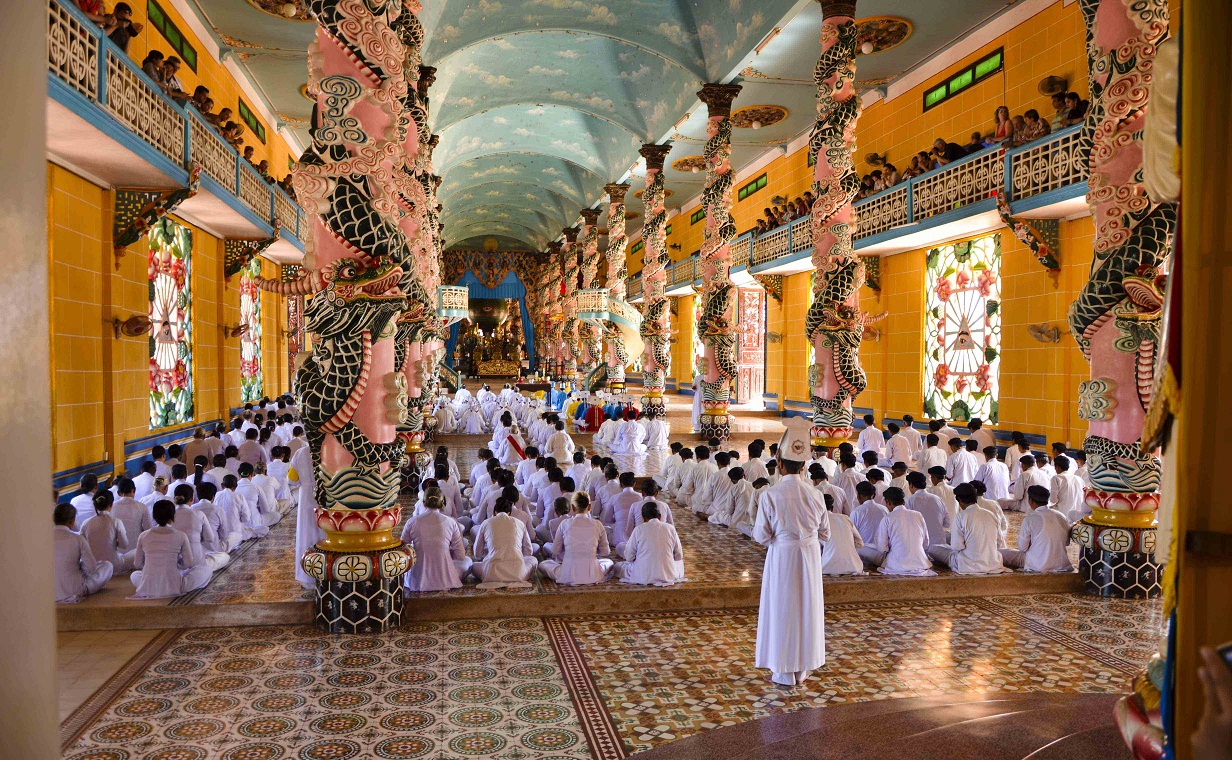
At the Cao Dai Temple
4. Traditional beliefs in Vietnam
With the perception that every object has a soul, since ancient times, the Vietnamese people have worshiped a large number of gods, especially those related to agriculture such as sun, moon, land, mountain, river, and forest...
Each ethnic minority in Viet Nam has its own way of practicing its traditional beliefs, most noticeably those maintained by some ethnic groups such as Tay-Thai, H'Mong-Dao, Hoa-San Diu-Ngai, Cham-Ede-Gia Rai, Mon-Khmer.
In addition, the most popular and time-honored custom of the Vietnamese people, including some ethnic minorities, is ancestor worship and commemoration of death anniversaries. Every Vietnamese family has an altar to worship their ancestors and attaches importance to the commemoration of the death anniversaries of the predecessors.
Every Vietnamese Family Has An Alta To Worship Their Ancestors
Besides ancestor worship in each family and each clan, many villages have a communal house or a temple to worship the Village Deity. The custom of worshiping the Village Deity is a unique feature of Vietnamese villages. The Village Deity worshiped in the village’s temple and communal house can be a god or an outstanding figure that rendered great services such as the forefather of a traditional handicraft or a national hero who greatly contributed to the cause of national building and fighting foreign invaders. The Vietnamese people also worship other gods like the Kitchen God and God of the Soil.
One important feature of the religious attitude of the Vietnamese is his great tolerance. There has never been religious fanaticism or religious warfare in Vietnam. Some knowledge of religion in Vietnam is fundamental to an appreciation of every phase of Vietnamese life, because religious beliefs richly color almost every Vietnamese thought and act, and affect the way they react to us and what we do. Let's take a look at some of the interesting tours in Vietnam to discover more about our country!
Xuyen
Image Sources: Internet
